

Bolsters can be used for restoration (restorative yoga) and yin yoga in your yoga classes to allow for more ease
when the position is being held for longer. Another great use is to create an easier feeling in the body in deep poses, working towards the full asana.
Here are a few examples of different uses, from passive yin restorative poses to dynamic deeper stretching.
Here are a few ways the bolster can be used to eliviate the pressure on the neck, or bring relaxation to the inversion. Learn the feeling of the upper back and prepare the neck for shoulderstand, sarvangasana.
To feel how the chest and upper back is opening in this inversion is really great to feel it this gentle. Shoulderstand is quite accessible to most but we don't realise how
open the upper chest really needs to be. Relax into this and change the tension in the upper back.
one could put the feet up on a block or extend the one bolster with another bolster. I prefer the body being in one line on this one.
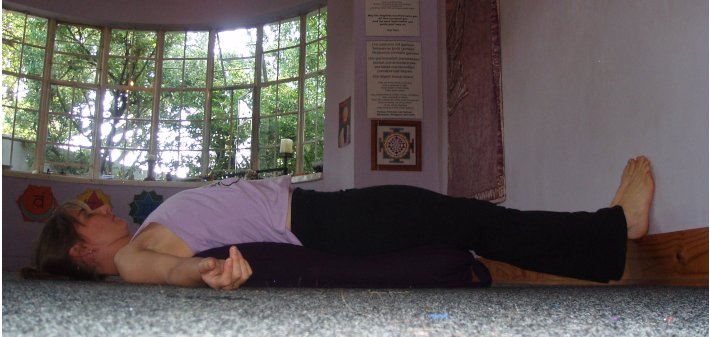
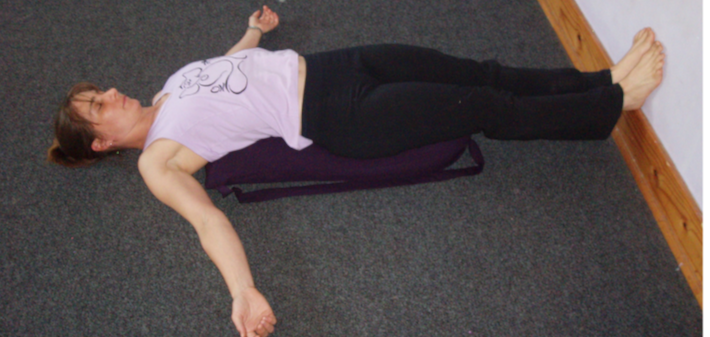
It might be the case, that the feet can't touch the floor initially, here we can assist with placing one or two bolsters under the feet. Sometimes one can even have a chair or coffee table. It doesn't seem to do much, but having the feet feel something beneath them makes a big difference.
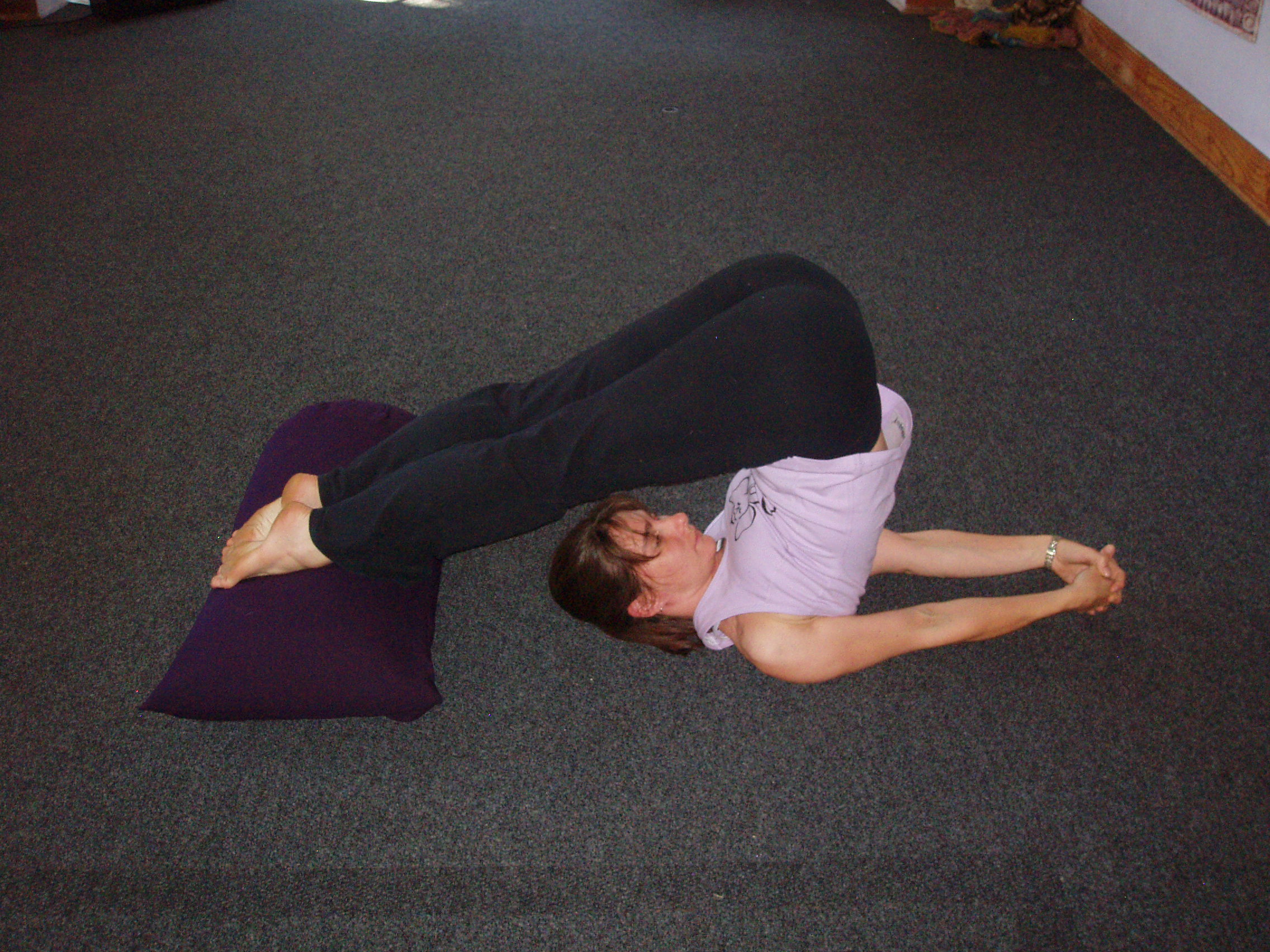
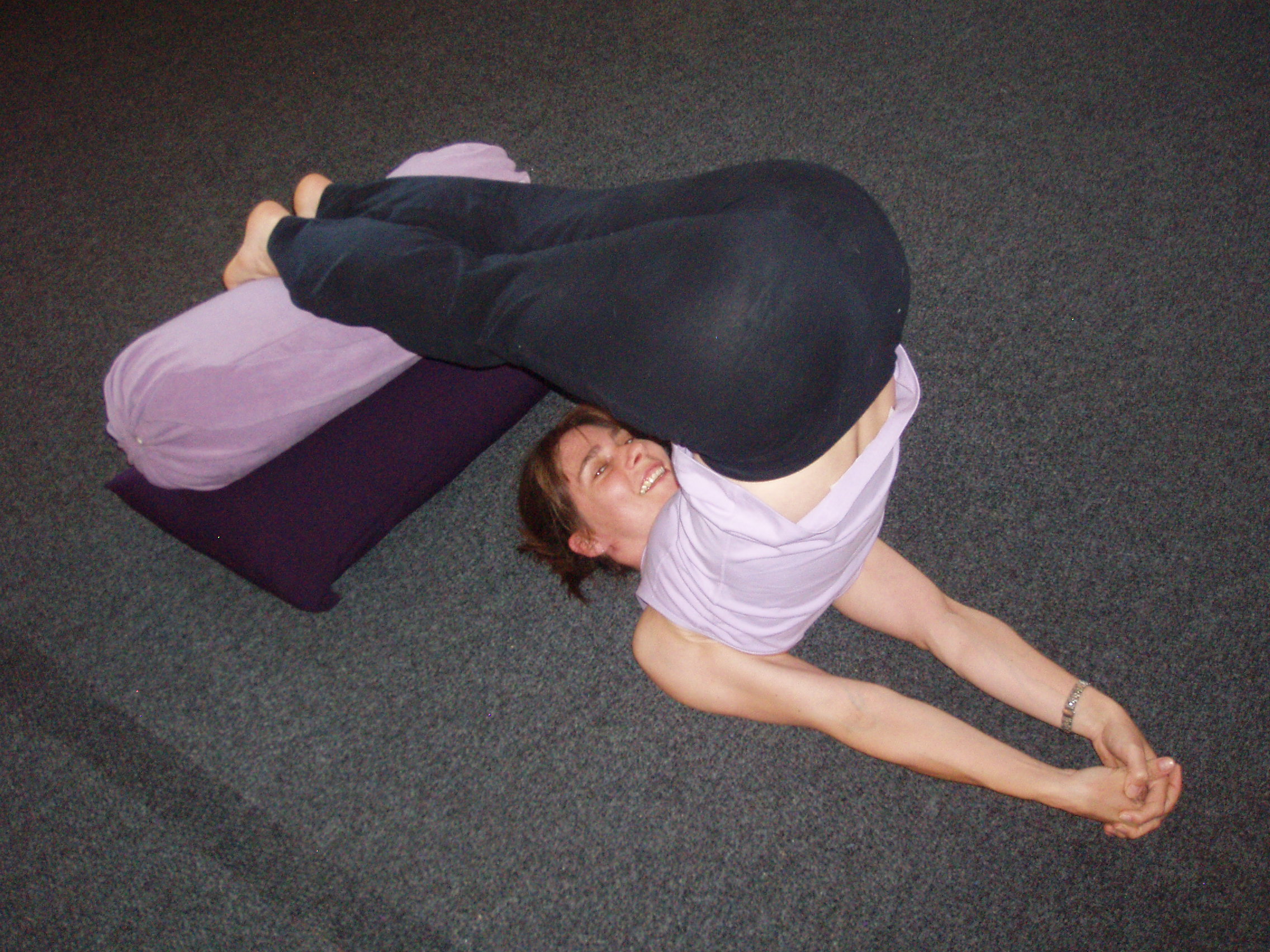
The Shoulderstand variation, where the hands are placed under the hips, is not that easy if the core muscles are not too strong and or the upper back is tight. I took a while to be able to do it without the bolster. The bolster, even using two to mimic the higher position is great. Can be done free standing or up against the wall, even more amazing for expecting mothers, heart condition, (allowing the heart to rest) or for those who work long hours standing.
Check out the video below to see how you can get into this in a funky way.
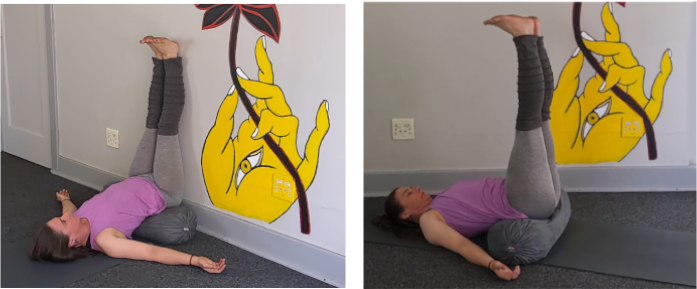
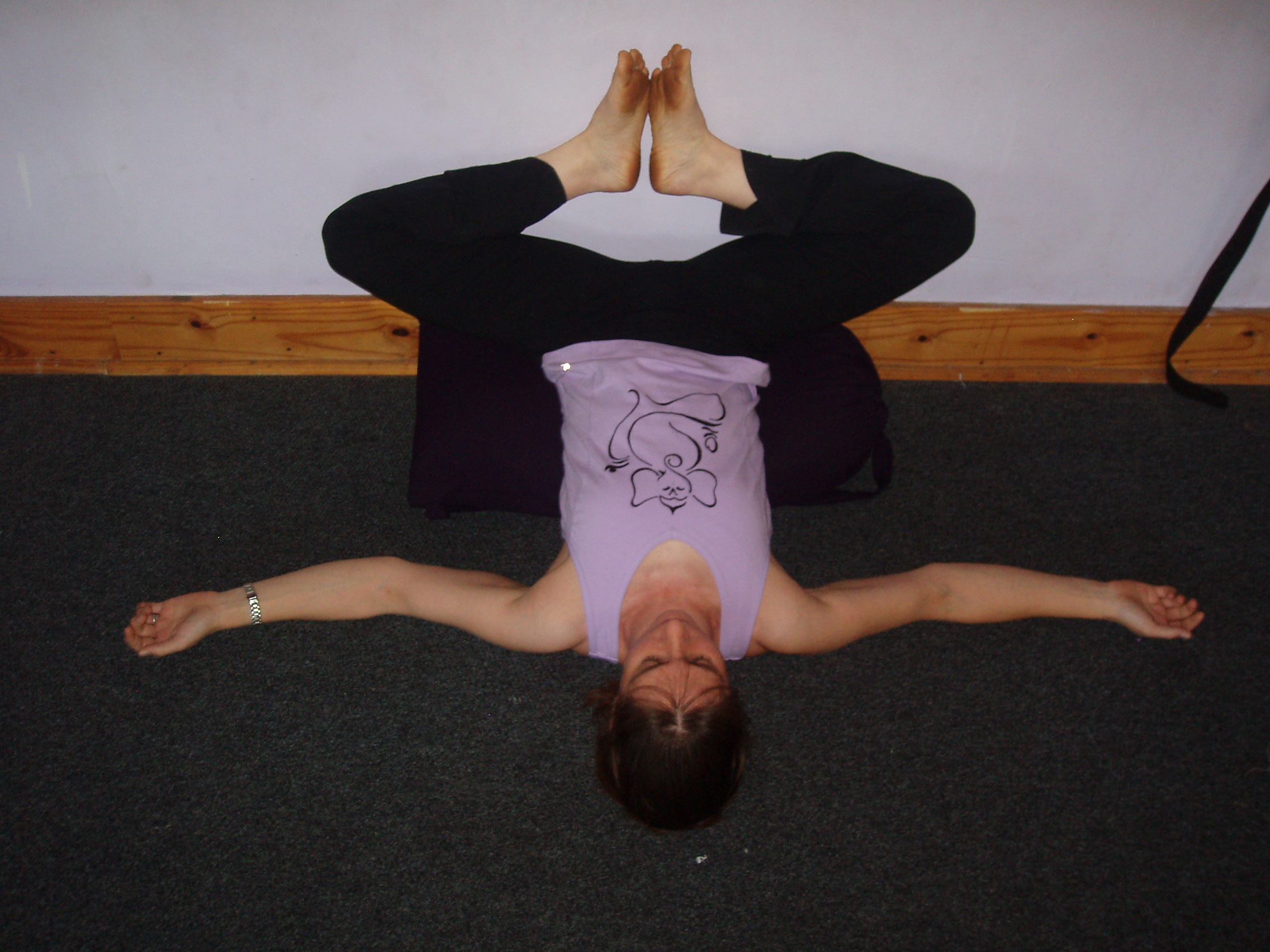
Once in vipareeta up against the wall, the legs can vary in many ways, one way is the butterly pose. The bolster is a beautiful assist to guide the pelvis in a better alignment. Then one can also open the legs into wide angle stretch upavista konasana working towards samakonasana, side splits.
This option is beneficial to take pressure off the neck when the upper back is tight. Iyengar Yoga, use foam blocks to assist the neck in this pose. This is a variation on that, probably not the easiest or most comfortable. If you do this without the wall it requires quite a bit of core stability to get into position. When doing it freestanding, use another bolster to create a platform for the elbows to be at the same height as the shoulders, the shoulders are on the bolster and the back of the head is touching the floor.
How to roll into the wall version, can be done freestanding too, just fun to stop the legs in time. Rolling into Sarvangasana and then continuing onto Vipareeta Karani. It is a really fun way to do it, and also creates a good position against the wall.
Be aware to not put pressure on the head when getting ready, feel the back of the neck touching the bolster, that is how rounded you should be before even rolling. Then when sliding down to vipareeta, be aware to keep the head up slightly and keep long hair from getting trapped underneath, or even some clothing.